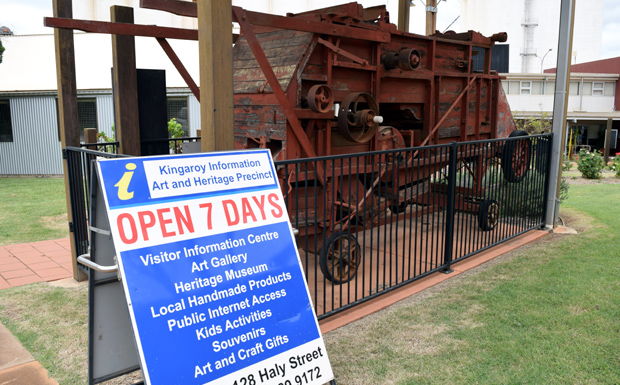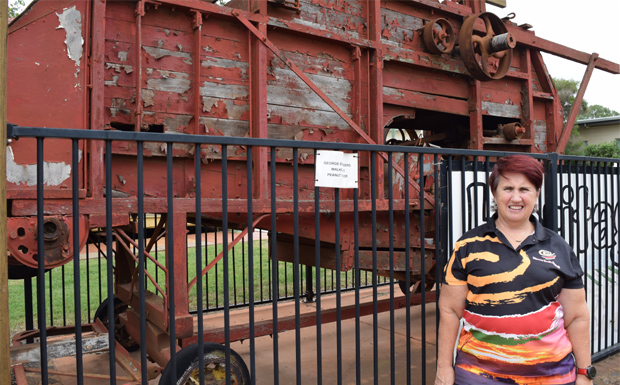
March 6, 2020
An ageing Stolzenberg peanut thresher located behind Kingaroy’s Visitor Information Centre is about to get a new lease of life.
Next Tuesday morning (March 10) the thresher will be moved to the South Burnett Woodcrafters’ new headquarters a few blocks away in King Street.
The move will involve closing Edward Street (between Mary and Albert streets) between 10:00am and noon to allow the large machine to be shifted from its location near the 1913 Council Chambers on to the rear of a transport truck.
A Council spokesperson said two hours had been allowed for the operation in case it turned out to be more difficult to move the fragile machine than expected.
But if things go smoothly, it may take far less time and the road closure will only be brief.
While it’s in effect, motorists should detour along Mary, Doonkuna and Albert streets.
Once the thresher has been moved, South Burnett Regional Council staff will repaint and restore the historic machine over a period of several months.
After this, it will be returned to its home near the 1913 Council Chambers where it can continue to delight visitors fascinated by the Kingaroy’s peanut history.
The Stolzenberg thresher is one of four historic machines located at the Kingaroy Information, Art and Heritage precinct.
The other three are housed under cover in the Kingaroy Heritage Museum attached to the Visitor Information Centre.
Collectively, the machines record the inventiveness of the region’s early peanut farmers.
“Machinery for farming peanuts was not available in the early 1900s when peanuts started being grown in the South Burnett, so farmers had to invent their own,” a Council spokesperson said.
“The first was a bicycle-powered thresher built in 1909, then an American-made wheat thresher was converted by a local farmer to thresh peanuts.
“Then in the late 1920s, Mr Harry Young designed and built his very own stationary peanut thresher.
“These machines are now on display in the museum, along with prototypes of other peanut harvesting machinery designed and built by local inventors and trades people, some of whose ideas are still in use today.”
























